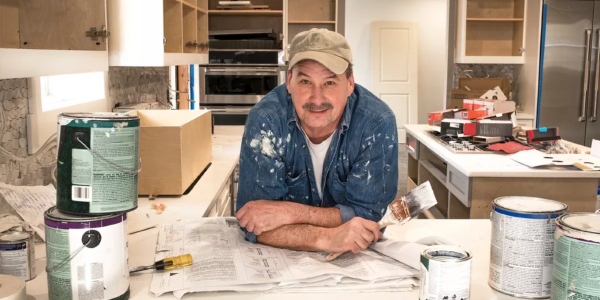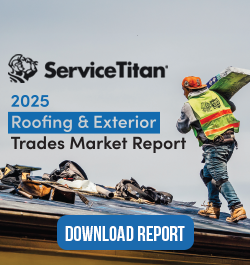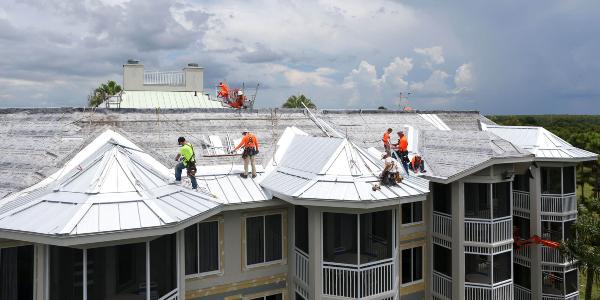4 reasons why people are choosing to take on more fixer-uppers

By Ingage.
In the face of rising expenses and challenges specific to homebuyers, many people have started to choose fixer-upper homes, ones that need repairs, instead of new builds. The experts at Ingage share the top reasons why your residential clients are choosing fixer-upper projects.
Inflation rates continue to keep many prospective homebuyers 40 and under struggling in a market that favors those selling their homes over those looking to purchase. Combined with COVID-19 induced supply issues, the housing market may look bleak to many homebuyers. Although the younger generation still wants to buy homes - with demand is even growing - the supply is still not there, especially at an affordable price.
The solution many are turning to? Instead of buying newly built homes, people have started purchasing fixer-uppers. Fixer-uppers are homes that are damaged and need serious repairs before they can be lived in again. The National Association of Realtors (NAR) reports that 82% of millennial buyers are willing to buy a home in need of significant repairs. Why are so many willing to buy a home they can’t immediately move into? These fixer-uppers are often sold at half the cost of new builds. For a generation struggling with rising costs and a competitive market, this is often the best and sometimes only way to become a homeowner.
While the main reason for buying fixer-uppers is lower cost, homebuyers are also welcoming the challenge to transform old houses into vibrant new homes. Granted, making these residences livable again isn’t something they can necessarily achieve with a can of paint and some nails. Here’s why today’s young, financially conscious homeowners are taking the challenge in stride.
1 - Affordability
According to Porch, an online home improvement resource site, fixer-uppers cost $225,000 on average, which is 45% less compared to new homes. In some parts of the US Midwest, about fifteen cities feature fixer-uppers priced at less than $100,000. On the other hand, similar houses located in prominent cities such as Austin (TX) or San Jose (CA) can cost upwards of $1 million. Either way, homes in need of major repairs will significantly go for a much lower listing compared to turnkey homes.
But do fixer-uppers really go for less once repair costs are factored in? That same Porch article reported that areas that sell fixer-upper homes on the cheap often require expensive repairs that exceed the cost of a brand-new home. In contrast, old houses located in areas with expensive housing will remain a bargain even after repairs. As a rule, always check the local housing market data before placing a bid on a second-hand home.
2 - Personalization
Owning a house means having the right to make changes as you see fit. Buying a new home will often negate that privilege, at least for the first few years. With new fixtures and fittings, it doesn’t make fiscal sense for new owners to undertake renovations soon after moving in.
Fixer-uppers, on the other hand, provide tons of opportunities for personalization. Since the house already needs repairs, it’s much easier to apply a personal touch to planned modifications. If someone's going to shell out for repairs, they might make them their own, after all.
3 - Return on investment
Rehabilitating a fixer-upper and making it habitable again not only brings back its luster but also primes a person to put the property back on the housing market. Now, however, that person can list their once-fixer-upper as a newly renovated home. That means the property can be priced higher to clean a nice profit.
To ensure a solid return, however, make sure to keep renovation costs under control. The cost of building materials remains on the rise. Meanwhile, labor costs, which take up between 20% to 40% of the repair budget, are also up significantly. Careful planning and preparation can help avoid overruns and prevent delays. Otherwise, there’s a risk watching other sellers wipe their inventories while a renovated-but-overpriced home continues to remain on the market.
Many of those trying to buy low and sell high can utilize interactive software, such as Ingage, to show off their work without the need for a private tour. Ingage offers a cloud-based way to present the story of the project through text, images and video. It allows a person to showcase the property in the most engaging way possible with interactive elements. Show potential buyers before and after photos that transition. Have them open a door or window by clicking on an image and display what’s inside. Let viewers zoom in and out of the rooms to appreciate the design space. Keep these details conveniently hidden from sight until they want to view them.
Even better, this program can send a copy of the presentation to clients via a sharable link. Rather than clogging potential buyers’ inboxes with bulky presentation files, the link will open an online copy of the presentation. Furthermore, built-in analytics features allow users to learn which sections captivated viewers and which areas need more work.
4 - DIY culture
If there’s a generation that totally embraced the Do-It-Yourself (DIY), it’s Generation Y. Millennials have taken active participation to the next level. They’re known for their ability to perform their own research, their preference for customization and their love for the experiential. A fixer-upper is just what they need to put their creativity and DIY skills to good use. At the same time, millennials cherish the experience of doing the job themselves and record the experience for posterity.
It’s worth noting that applying a bit of common sense and caution is still something that all homebuyers should do. While DIY renovations can apply a personal touch, some preferences can turn out to be highly subjective. Understanding that what homeowners want and what the general housing market wants aren’t always mutual can go a long way. Otherwise, sellers will have to prepare for a new round of renovations to make the fixer-upper a bit more appealing to buyers.
Original article source: Ingage
Learn more about Ingage in their Coffee Shop Directory or visit www.ingage.io.























Comments
Leave a Reply
Have an account? Login to leave a comment!
Sign In